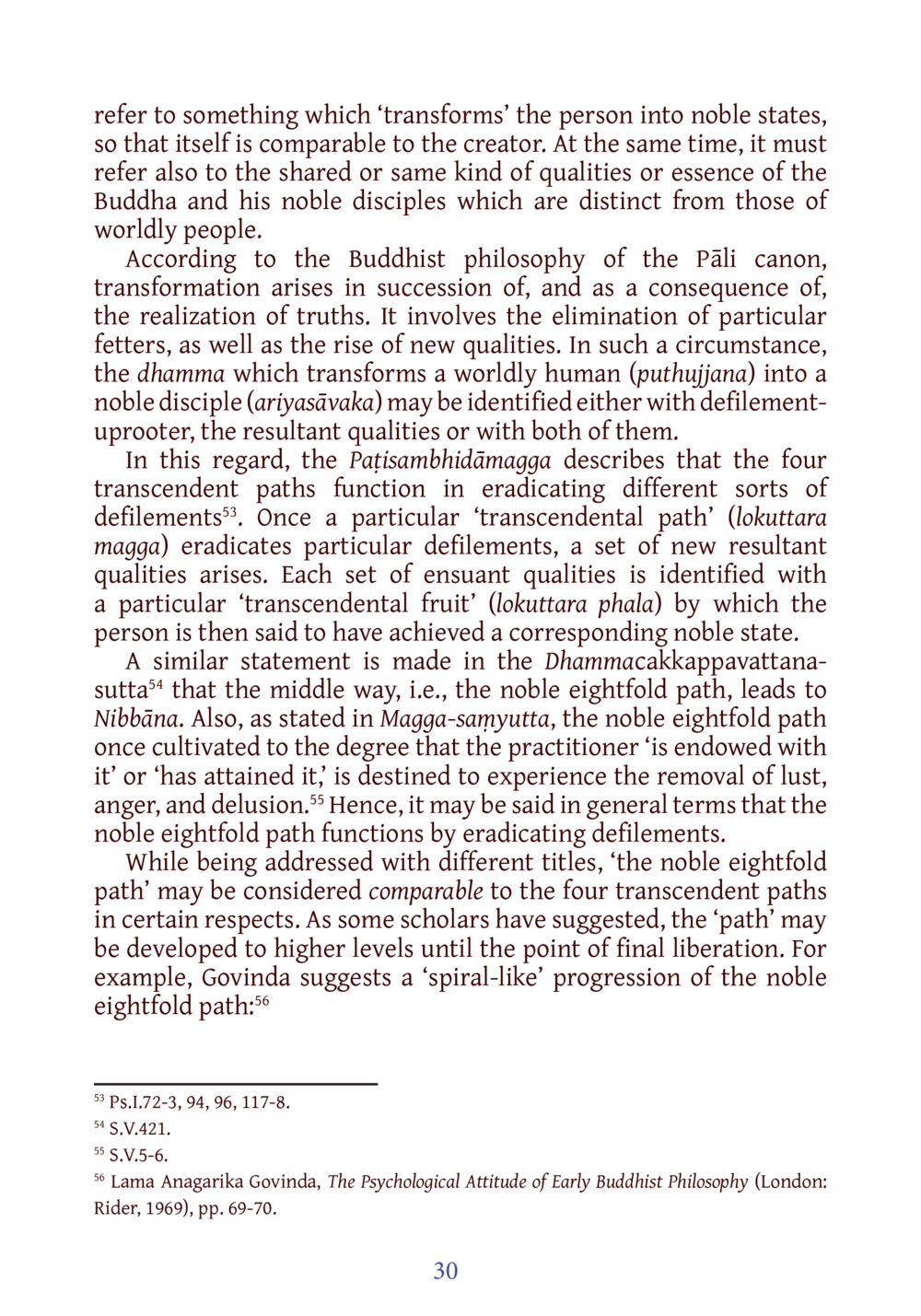The Transformative Power of the Noble Eightfold Path in Buddhism : หน้า 51/141
DIRI Journal : หน้า 51/141 Explore how the Noble Eightfold Path transforms individuals into noble disciples by eradicating defilements and achieving profound insights in Buddhist philosophy.
1 ครั้ง

สรุปเนื้อหา
This text delves into the concept of transformation in Buddhist philosophy, specifically through the Noble Eightfold Path. It highlights how this path aids in the eradication of defilements, enabling worldly individuals to become noble disciples. Drawing from the Pāli canon, it asserts that true transformation comes from realizing truths and overcoming specific fetters. The text references the Patisambhidāmagga describing four transcendent paths that help eliminate different defilements and result in the emergence of noble qualities. Additionally, it cites the Dhammacakka·pavattana·sutta, which supports that following the Noble Eightfold Path leads to Nibbāna, by removing lust, anger, and delusion. Scholars posit that the development of these paths can lead to a sophisticated progression towards ultimate liberation, suggesting a 'spiral-like' ascent in practice.
หัวข้อประเด็น
-Transformation in Buddhism
-Noble Eightfold Path
-Defilements and their eradication
-Pāli Canon
-Transcendental paths
-Nibbāna
ข้อความต้นฉบับในหน้า
หน้าหนังสือทั้งหมด













































































































































